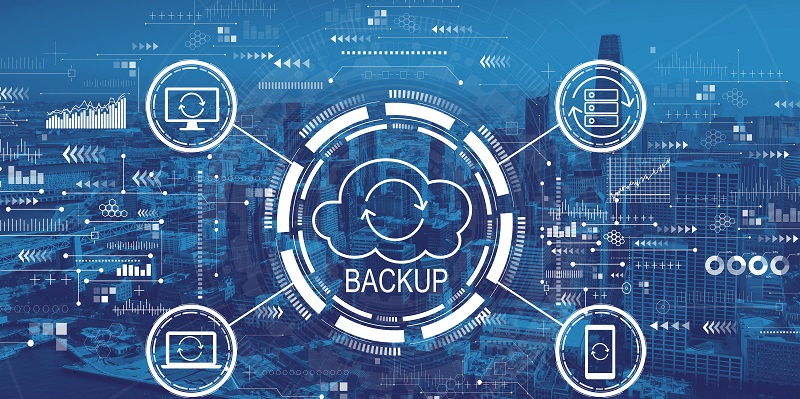In today’s digital age, where data is the lifeblood of any organization, backup and recovery have become critical components of maintaining data security and ensuring business continuity. Backup and recovery involve the process of copying enterprise data, storing it securely, and being able to restore it in the event of a disaster or service interruption. However, it is not enough to simply perform backup operations; a true backup strategy involves keeping multiple copies of data in different locations on a variety of storage media to cover all possibilities. In this comprehensive guide, we will explore the intricacies of data backup and recovery, highlighting best practices and essential considerations for implementing an effective backup strategy.
Backup process
The backup process relies on specialized software that enables the seamless copying of data to a backup appliance, backup server, or the cloud. These backup solutions can store data on various storage media such as hard disk drives (HDDs), solid-state drives (SSDs), or tapes. Each storage medium has its advantages and disadvantages, depending on factors like storage capacity, access speed, and cost. Organizations must carefully evaluate their requirements to choose the most suitable storage medium for their backup needs. Additionally, backup appliances and servers play a crucial role in managing and organizing the backup data effectively.
The 3-2-1 rule
One of the fundamental principles of data backup is the 3-2-1 rule. This rule establishes the best practice of making a total of three copies of critical data using at least two different storage media and storing at least one copy offsite. By following this rule, organizations create redundancy and significantly reduce the risk of data loss. In the event of a local disaster or hardware failure, having an offsite copy ensures that data remains accessible and recoverable. Implementing the 3-2-1 rule provides an essential layer of protection against a range of potential risks and threats.
Compression and deduplication
As data volumes continue to grow exponentially, storage efficiency becomes paramount. Compression and deduplication are techniques used to reduce file sizes and network traffic, while simultaneously improving transmission speeds. Compression algorithms reduce the size of files, allowing more data to be stored within the available storage space. Deduplication, on the other hand, eliminates redundant data by identifying and removing duplicate files. By implementing compression and deduplication, organizations can optimize their storage capacity and transmission networks, ultimately improving overall backup and recovery performance.
Scheduling and automation
To ensure that backups are executed consistently and reliably, organizations should schedule backup operations for a time when network traffic is low. This helps minimize any potential disruptions to daily business operations. Additionally, automation features provided by backup software can be utilized to schedule and run backups without requiring manual intervention. Configuring automated backup schedules eliminates the risk of human error and ensures that backups are regularly performed, providing peace of mind and consistent data protection.
Common pitfalls in data backups
Despite having backup processes in place, many organizations discover that their backups are either unrecoverable or only partially recoverable. This unfortunate situation often arises due to several common pitfalls. Neglecting to regularly test and verify the backups is one significant pitfall. Backups that have not been adequately validated may result in data corruption or loss during the recovery process. Moreover, relying solely on a single backup location without considering redundancy and additional copies can also lead to data loss. Ensuring that data integrity is maintained throughout the entire backup process and conducting regular tests and checks are crucial to avoid these pitfalls.
Factors Affecting Recovery Speed
When it comes to data recovery, the speed at which it can be restored is of utmost importance. Several factors can influence the speed of recovery, including the volume of data that needs to be restored and the storage media being used. Larger volumes of data naturally take longer to restore compared to smaller datasets. Additionally, the choice of storage media can impact recovery speed. For example, solid-state drives (SSDs) typically provide faster access times compared to traditional hard disk drives (HDDs) and can significantly reduce recovery times. Organizations should consider these factors when designing their backup and recovery strategies to optimize recovery speed and minimize downtime.
Types of data backups
Data backups can be categorized into two main types: full backups and incremental backups. Full backups involve copying all data, regardless of whether it has been previously backed up or not. This comprehensive approach ensures that, in the event of data loss or corruption, a complete copy of the data is readily available for recovery purposes. On the other hand, incremental backups capture only the files that have been created or changed since the last full backup. These incremental backups are often faster and require less storage space than full backups. Implementing a combination of full and incremental backups can help strike a balance between recovery speed and storage efficiency.
In today’s data-driven world, implementing a comprehensive backup and recovery strategy is not just an option but a necessity. Backup and recovery processes are essential for maintaining data security, facilitating business continuity, and safeguarding against potential disasters or service interruptions. By following best practices such as the 3-2-1 rule, utilizing compression and deduplication techniques, scheduling backups during low network traffic periods, and regularly testing and verifying backups, organizations can mitigate the risk of data loss and ensure prompt recovery when incidents occur. By prioritizing backup and recovery efforts, organizations can provide the foundation for long-term success and growth in an increasingly digital landscape.

